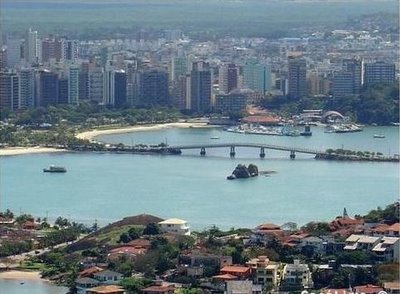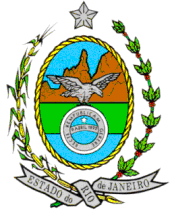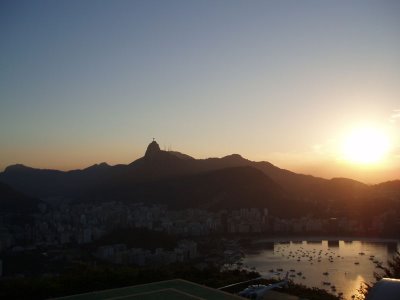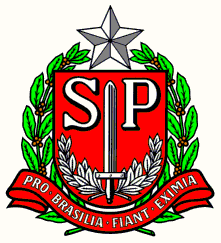Rio de Janeiro is one of the 27 units federativas of Brazil and it is located at the part east of the Southeast area. He/she has as limits the states of Minas Gerais (N and IN THE), Espírito Santo (NE) and São Paulo (ONLY), as well as the Oceano Atlântico (L and S). It occupies an area of 43.653 km². Its capital is the city of Rio de Janeiro. The natural of the state of Rio de Janeiro are called fluminenses (of the Latin fl?men, literally " river
The most populous cities are: Rio de Janeiro, New Iguaçu, Niterói, Duque de Caxias, São Gonçalo, São João of Meriti, Campos of Goytacazes, Petrópolis and it Returns Round. The State is formed by two areas different morfologicamente: the slope and the plateau, that extend, as parallel strips, of the coast for the interior. Paraíba of the South, Macaé, Guandu, Piraí and Muriaé are the main rivers. See list of rivers of Rio de Janeiro. The climate is tropical.
Rio is part of the bioma of the Brazilian Atlantic forest, tends in its relief mountains and located slopes between the Mountain of Mantiqueira and Oceano Atlântico, standing out for the diversified landscapes, with scarps elevated to the seashore, sandbanks, bays, lagoons and tropical forests. Making emblem with Espírito Saint states, São Paulo and Minas Gerais, Rio de Janeiro is one of the smallest states of the country and the smallest of the Southeast area.
It possesses a coast with 635 kilometers of extension, taken a bath by the Oceano Atlântico, being just overcome in size by the backs of Bahia and Maranhão.
Geology
In a general way, the soils fluminense are relatively poor. The most favorable soils to the agricultural use meet in Campos of Goytacazes, Cantagalo, Lamb and in some municipal districts of the it is worth of the river Paraíba of the South.
Relief
They exist in the state two units of relief: the Slope Fluminense, that corresponds in general to the located lands below 200m of altitude, and the Plateau or it Saws Fluminense, above 200 meters.
The Slope Fluminense accompanies the whole coast and it occupies about of half of the surface of the State. It presents variable width, quite it narrows among the bays of the Big Island and of Sepetiba, enlarging progressively at the sense east, until the river Macacu. In that space, in the municipal district of the capital, they rise the massive of Tijuca and of the White Stone, that reach altitudes a little superiors to 1.000 meters. Of the bay of Guanabara to Cabo Frio, the slope narrows a succession of small elevations again, of 200 to 500 height meters, called them massive litorâneos fluminense. Starting from Cabo Frio, he/she enlarges again, reaching its maximum extensions in the delta of the river Paraíba of the South.
The Plateau or it Saws Fluminense it occupies the interior of the State, that it is located among the Slope Fluminense, to the south and it is worth it of the river Paraíba of the South. The elevation of the Mountain of the Sea, to the north of the slope, forms its edge. The Mountain of the Sea receives several local denominations: it saws of the Organs, with the Larger Pick of Friburgo (2.316 meters), the Stone of the Bell (2.263 meters) and Stone-Açu (2.232 meters), of the Macaws, of the Star and of Rio Preto. The mountain of Mantiqueira collects the northwest of the State, to the north of the it is worth of the river Paraíba of the South, where it is parallel to the Mountain of the Sea. The highest point of Rio de Janeiro, pick of the Black Needles (2.787 meters) it is located in the massive of Itatiaia, that rises of the mountain of Mantiqueira. For the interior, the plateau is going decreasing of altitude, until arriving to the it is worth of the river Paraíba of the South, where the average drops for 250 meters. To northeast, it is observed a series of hills and hills of low altitudes.
Climate
The state possesses a very varied climate and with hot summers to every year that passes. In the Slope Fluminense, it dominates the semi-humid tropical climate, with abundant rains in the summer and dry winters. The annual medium temperature is of 24ºC and the index pluviométrico it arrives to 1.250 annual millimeters. In the elevated points of the mountainous area, limit between the Slope Fluminense and the Mountain Fluminense, the tropical climate of altitude is observed, but with hot and rainy summers and winters colds and dry. The annual medium temperature is of 16ºC. In most of the Mountain Fluminense, the climate is also tropical of altitude, but with hot and rainy summers and winters colds and dry. The annual medium temperature is of 20ºC and the rains reach of 1.500 to 2.000 mm anuais.A city of Rio de Janeiro tem,como official records, 43,2°C in 14 of January of 1984 and 4,8°C on July 19, 1926. Non oficialmente,já made 45°C and 3°C,respectivamente. In July of 2006 the State had more than 25 days without rains, temperatures above the 30 degrees besides the humidity of the air to have been below 20%. Due the high temperatures and it lowers humidity there was a period with thousands of focuses of fires in the forests of Rio de Janeiro. Continuing with 2006, September 6, 2006 was registered, in the neighborhood of the High of Boa Vista, the smallest temperature for a month of September, and the smallest from July 18, 2000. The carioca trinitaram with 8,1°C. In the mountains fluminense, the city of New Friburgo registered zero degree and the one of Petrópolis two positive degrees.
[to publish]
Vegetation
Due to the occupation agropastoril, the desmatamento modified the original vegetation of the State sensibly. Now, the forests occupy a tenth of the territory fluminense, concentrating mainly on the parts more discharges of the mountains. There are great extensions of fields produced by the destruction, own for the pecuária, and, in the coast and in the fund of the bays, he/she enrolls the presence of growth of mangroves (group of trees calls swamps, that grow in muddy lands).
Hidrografia
The river Paraíba of the South is the main river of the State. He/she is born in São Paulo and it ends in the ocean Atlantic—as most of the rivers fluminense—, in the height of São João of Barra. Its main ones flowing, in the State, they are it Pigeon and Muriaé, for the left margin, Piabinha, Piraí and Paraibuna, for the right margin. Besides him Paraíba of the South, they stand out. of north for south, the rivers Itabapoana, that marks border with the Espírito Santo, Macabu, that deságua in the Ugly pond, Macaé, São João, Majé and Guandu.
The coast fluminense is stippled by numerous ponds, old bays closed by cords of sand. The most important are the Ugly ponds, the largest of the State, Araruama, Saquarema, Maricá, Marapendi, Jacarepaguá and Rodrigo of Freitas, the three last in the municipal district of Rio de Janeiro.
Coast
The coast of Rio de Janeiro is very cut out in its south space. The main accidents are the bay of the Big Island, the Big island, the sandbank of Marambaia, the bay of Sepetiba and the bay of Guanabara.
Ethnic groups
The population of Rio de Janeiro has its origins above all in two people: the Portuguese and the Africans. Even middles of the century XIX, most of the population fluminense was composed by blacks, getting to have the largest concentration of slaves since the end of the Roman Empire. Even so, the number of Portuguese immigrants disembarked in the city of Rio started to grow suddenly in that century, what did with that practically if it equaled the number of people of African origin and the one of Portuguese origin. Being added the natives, other people also contributed to the formation of the population of the state.
The first immigrants no-Portuguese to arrive in the area were the Swisses, in 1818, founding in the area of the mountains the city of New Friburgo. Not very later, they would begin to arrive the Germans, that also rumaram for the mountains, mainly for the area of Petrópolis. Italian and Spaniards would arrive later, also contributing to the ethnic diversity of Rio de Janeiro. Finladeses also settled in Penedo, district of the city of Itatiaia, in the South Fluminense, where it maintains a colony until the current days.
Economy
Great part of the economy fluminense bases on the installment of services, still tends a significant part of industry and little agricultural.
62,1% in representation of GDP represent the installment of services in areas as telecommunications, audiovisual, YOU, tourism, tourism of business, ecoturismo and trade.
Soon after, with 37,5% of GDP the industry comes - Metalúrgica, steel plant, gas-chemistry, petro-chemistry, naval, automobile, audiovisual, cimenteira, nutritious, mechanics, editorial, graph, of paper and cellulose, of mineral extraction, extraction and I refine of petroleum.
It is finally, with 0,4% of GDP, the Agricultural, being like this small the expression in the state economic production.
The state of Rio de Janeiro is the second largest economy of Brazil, and Wednesday of South America, tends a superior gross domestic product to the of Chile, with a participation in national GDP 15,8% (2005–CIDE and IBGE) and with the second Brazilian per capita income, just losing to Distrito Federal.
Century XVII
In the century XVII, the pecuária and the sugar-cane impelled the progress, definitively insured when the port began to export the extracted gold of Minas Gerais, in the century XVIII. Between 1583 and 1623 the area of larger prominence of production of sugar, in the south of Brazil, moved of São Vicente to Rio de Janeiro, in the area of the bay of Guanabara. In 1629 there were 60 mills in Rio de Janeiro, in 1639 there were already 110 mills and Rio de Janeiro started to supply sugar Lisbon, due to the taking of Pernambuco. In the end of the century XVII there were 120 mills in the area.
In 1640, merchants and owners of ships received permission from trading directly with Africa of the port of Rio de Janeiro, that was also destined to the slaves' illegal export to Rio of the Silver. Such trade was plenty of impactado for the taking of Angola for the Dutchmen. The indigenous slaves' use was enlarged, but the merchants and proprietors had to become indisposed with the Jesuits because of the relative papal prohibitions to the escravização of the Indians.
The cultivation of the sugar was increased and with this he/she increased the slaves' need, but the situation was solved with the retaking of Angola in 1648, bringing peacefulness to the relationships with the Jesuits. In spite of that, the prices of the sugar constantly floated and they suffered low between 1635 and 1645, with the conquest of Pernambuco for the Dutchmen and between 1659 and 1668, due to the production prohibition and sale of liquor, used in the trade with Africa, and also with the Municipal Revolt - in the city of Rio - of 1660 against the true dynasty of Salvador Correia of Sá and Benevides.
Another important product of export was the tobacco, in smaller proportion than Bahia and Pernambuco. The fishing of the whale in Guanabara was an important economic section and in 1644 the municipality of Rio created a tax on this industry.
With Salvador Correia of Sá and Benavides, Rio acquired an important manufacture of the naval construction, that got to build the «Eternal Priest» with its 114 canyons, but the section didn't stay and it decayed for labor lack. The port, in the beginning only military, it passed the port of the sugar and slaves' importer. The coastal traffic increased starting from 1660 including the legal trade with the other Captaincies and the illegal trade with Buenos Aires, that enriched a group of merchants.
In 1645, with Dutch attacks to the merchant ships, the only System of Fleets was created for Brazil, that made her once a year, with fort escort of war ships. Embarkations of matters could join to the fleet, but there were restrictions with relationship to the participation to big ships, what moved away many proprietors of ships. There was still the problem of the shortage of the freights. Portugal, as he/she needed money, of soldiers and of ships for the fight against the Dutchmen in the Northeast and in Angola, it gave to the demands and it included the participation of smaller ships. The fleet arrived Lisbon, after traveling several Brazilian ports, with a number of 70 to 90 embarkations.
A constant problem in Rio was the coin lack, critic in 1640, in order to the Iberian Union. But the discovery of gold in the area of the mines and the creation of a House of the Coin in Rio, in 1698, came to solve the problem.
Since 1649 the General Company of Trade of Brazil had been created, that didn't dispose of enough capital and, when he/she had, it was deviated for military activities. The Company had the monopoly of the sale of wine, cod, wheat flour and oil in Brazil. In 1659 the Company lost the monopoly that impeded the production and sale of liquor and in 1720 it would be extinct.
Century XVIII
In 1763, Rio de Janeiro became the headquarters of the Vice-kingdom of Brazil and the capital of the colony. With the change of the royal family to Brazil, in 1808, the area was very beneficiary with urban reforms to shelter the Portuguese Court. Inside of the promoted changes they stand out: the transfer of organs of public administration and justice, the creation of new churches, hospitals, barracks, foundation of the first bank of the country - the Bank of Brazil - and the Royal Press, with the Gazette of Rio of Janeiro.Nos following years also appeared the Botanical Garden, the Real Library (today National Library) and the Military Real Academy.
Thus, it happened a process of cultural, influenced introduction not only for the information brought by the arrival of the royal family, but also for the European artists' presence that you/they were contracted to register the society and Brazilian nature. In that same time, he/she was born the Real School of Sciences, Arts and Occupations.
The state of Rio and the Old Republic
The decadence went the tonic in to county in the last days of the imperial regime. In the fight for the Republic, several the fluminenses that were distinguished were, fitting to mention Antonio of Silva Jardim, Lopes Trovão, Rangel Pestana, among others. Fort also went the presence in to abolitionist campaign.
With the proclamation of the Republic, soon political problems that were happened, with the time, removing it the greatness and the prominence gotten during the Empire.
After the approval of the new state Constitution, on April 9, 1892, the capital was transferred for the city of Petrópolis, due to the agitations that happened during the government of the Marechal Floriano Peixoto in the cities of Rio and of Niterói, and also to the Revolt of the Armada, happened in that time.
After several years in that fight politics they make the State to lose the administrative direction, fact checked by the duality of Legislative Assemblies by three periods, these make to increase still more the economic crisis fluminense, that he/she crawls in a such way to transform, gradually, its plantations of coffee in pastagens for the pecuária and to do with that the same doesn't accompany the industrial development tried by São Paulo.
The Revolution of 30 and the New State
With the arrival of Getúlio Vargas to the power, several interventors were nominated, what didn't alter the socioeconomic picture fluminense until that, in 1937, Ernani of Amaral Peixoto, son-in-law of Vargas is named (this married Alzira Vargas in 1939) and that it could accomplish a lot for the State, giving incentive to its industrial development, with the construction, of the National Metallurgical Company (CSN) in Round Turn, in it is Worth it of Paraíba fluminense and of the National Factory of Motors (FNM), in Duque de Caxias, in the Slope Fluminense, as well as the expansion of the mesh state bus station.
Amaral Peixoto still mobilized the population fluminense in the war effort, that resulted in the acquisition, with the collected resources, of a new ship for the Navy of Brazilian War.
It dates of that period, also, the formation of several higher education institutions and study centers on the culture and history fluminenses, that they tried to rescue the memory and to build an identity for the population of the State, emptied economic and politically since the end of the Second Empire.
The redemocratização and the Revolution of 1964
With the fall of Vargas, Amaral Peixoto was moved away of the command of the State and five interventors were happened in the government fluminense until the election, in 1947 of Edmundo of Macedo Soares and Silva, manufacturer of the usina of Round Turn, that it reorganized the administration and the state finances, as well as the incentive continued to the industrialization and the agricultural production.
It was happened, however, by Amaral Peixoto, that gives new force to the industrial expansion and bus station, dating of that period the creation of the National Company of Alkalis.
Until the year of 1964, the state governments seek dinamizar the economy fluminense, reforming the structure of the state and giving new feature to the city of Niterói.
After the Revolution of 1964, Silveira's governor Badger, recently-chosen in 1963, it is moved away of the position, being substituted by General Paulo Torres that is about creating the Company of Development of the State of Rio de Janeiro (CODERJ).
It is followed him Jeremias Fontes and Raimundo Padilha, that it would be the last governor of the State of Rio before the coalition with the one of Guanabara, dating of its government Ponte's conclusion Rio-Niterói and the beginning of the construction of the nuclear usina of Angra dos Reis.
[to publish]
The new state of Rio
After the edition of the Complemental Law nº20 in 1974, signed by the president Ernesto Geisel, they melted States of Guanabara and of Rio de Janeiro on March 15, 1975. The capital of the new State of Rio de Janeiro became the city of Rio de Janeiro, turning the political-territorial situation previous to 1834, year of the creation of the Neutral Municipal district. They were still maintained the symbols of the old State of Rio de Janeiro, while the symbols of the old State of Guanabara became the symbols of the Municipal district of Rio de Janeiro.
Some allege that the motivation behind president Geisel for the coalition went neutralize to force oposicionista of MDB in the State of Guanabara. The old State of Rio de Janeiro, traditionally, a pole of conservatism, vide successive governments of PDS was always considered and later on of the ARENA, in spite of the great force of PTB, and after 1964, of MDB, in that area, what took to the erroneous conclusion that this would come to neutralize the opposition emedebista guanabarina, avoiding larger problems for the military government, that ends for indicating as first governor of the " new " state admiral Floriano Peixoto Faria Lima.
In spite of Faria Lima to assume the State with the federal government's of massive investments promises, in order to compensate the problems that could bring to an agreement of the coalition, those they were not summed up fully, even of the implantação of the nuclear usinas in Angra dos Reis and of the expansion of the National Metallurgical Company, what carted problems that would come to be felt, mainly in the habitation areas, education, health and safety in the decade of 1980.
With the political opening and the turn of the direct elections for governor, the fluminenses choose in the year of 1982 Leonel of Moura Brizola, political exile since 1964, that it returned to Brazil with the flag of the trabalhismo varguista, what conquered the unsatisfied electorate with the second I govern of Chagas Freitas.
With the adoption of several controversial measures, Brizola angaria in that first mandate the dislike mainly of the electorate of the city of Rio, due its politics of help to the layers more poor of the slums of that city, had as Populist. That, ally to the disarray that there would be in the public safety's area, more the economic crisis that settled at the country in that decade they ended for impeding that he made its successor.
Chosen Moreira Franco in the year of 1987, supported by the inflationary control obtained by the federal government to the time and for the dissatisfaction with Brizola, not very he/she moves the social situation of the population fluminense, what ends for taking to a new election of Leonel Brizola to the state government in the year of 1991.
In its second mandate, Brizola ends for repeating some mistakes of the first administration, that make the State to suffer a " white " intervention of the federal government in the year of 1992, during the world conference about ecology ECO-92, and also the year of 1994, due to situation of lack of control of the violence on the part of the local government, what takes the decision, supported by the population of placing troops of the armed forces patrolling the streets of the capital.
Amid those problems, Brizola gives up the mandate in order to compete to the federal elections, what takes to Marcello Alencar election, that implements a stronger politics with relationship the public safety, returned for I confront it with the marginalidade, what ends for generating dislike of the population of low income favelada, more exposed to the enfrentamentos between the police and thieves.
In the following election, Anthony Garotinho, been godfather to the time by Brizola and that previously it had lost the election for Alencar, governor supported by a left alliance that includes as vice-governor Benedita of Silva is chosen, of the PT, that substitutes it in 2002 when he also renounces, like Brizola, seeking the presidential race. Benedita assumes amid problems of fiscal order that end for impeding it of if reeleger, being defeated by Rosinha Garotinho, wife of Anthony Garotinho, that seeks, after having chosen, to maintain the style per times controvertido of governing of its husband, still facing hard critics with relationship to the public safety's situation
 Vitória (Espírito Santo)
Vitória (Espírito Santo)







